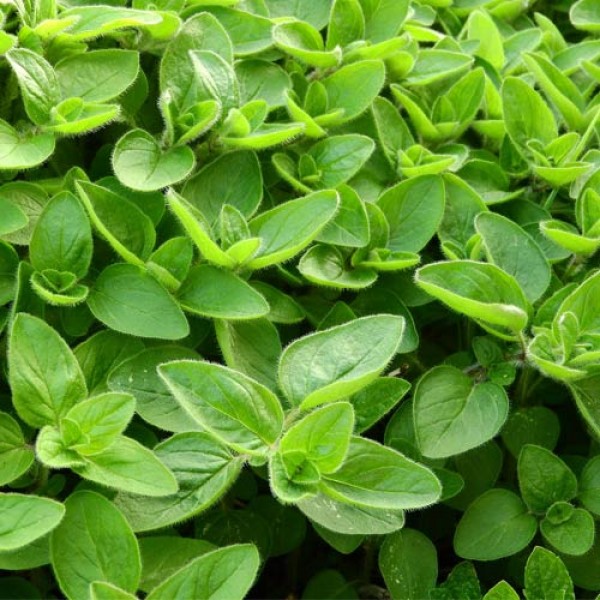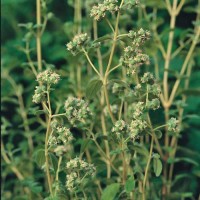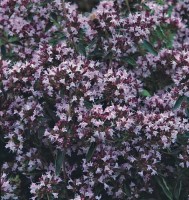
Growing marjoram from seed
Like oregano, marjoram belongs to the labiates family. Despite their close relationship, there are differences in the cultivation of the two.
Marjoram is very popular as a spice for hearty home cooking and is also known as sausage herb. We have the most important tips and tricks for growing the Mediterranean herb properly:
Location
Marjoram originates from the Mediterranean region around Anatolia and was brought to Europe in the 16th century. Its homeland reveals how the herb would like to live in Western Europe.
Marjoram likes nutrient-rich, well-drained, dry soil in a full sun location. Additionally, if the site is sheltered from the wind, the conditions are perfect for marjoram. In a herb spiral, marjoram prefers a place in the upper, sunny and dry zone next to Mediterranean herbs such as rosemary, thyme and oregano.
Sowing
Since marjoram is sensitive to frost, growing should start indoors. You can start between March and April. It can be sown outdoors after all danger of frost has passed in mid-May. Since marjoram is a light germinator, it should only be lightly sprinkled with soil. When sowing indoors, it is sufficient to sprinkle the seeds on the soil and press lightly. After about 10 - 14 days the first seedlings will appear. When the plants are strong enough in mid-May, you can transplant them in the chosen spot in the garden. Marjoram also thrives in pots on a sunny windowsill in the kitchen.
Care
Marjoram does not like competition for nutrients and light. Therefore, weeds must be removed regularly. Watering is little work for this drought-tolerant Mediterranean plant. However, a complete drying out of the soil should be avoided. Regular fertilising is not necessary, but one dose of herb fertiliser per season is good for the plant. If the marjoram grows in a pot, it can be more.
Flowering
Marjoram flowers are suitable for consumption. However, always make sure that the flowers are actually marjoram flowers. These are found on the pseudo-spikes of the plant and form a large number of small white flowers. The marjoram flowers are particularly aromatic and give off the typical marjoram scent, which is similar to the scent of oregano.
Pests and diseases
Marjoram is quite robust and is hardly ever attacked by mildew. On the contrary, it is often planted next to other plants to protect them from mildew.However, marjoram is very popular with some pests. These include:
- Snails
- Aphids
- Soil fungi
- Ground caterpillars
- Jumping bugs
Make sure that the soil is not too moist. This will reduce the infestation of pests considerably.
Harvest
As with all aromatic herbs, essential oils are decisive for the taste of marjoram. Content and composition of the essential oils depend on the variety, but can also be influenced by the time of harvest. The most aromatic plant material can be harvested shortly before or at the beginning of flowering. Flowering takes a lot of energy, which is then no longer available to produce essential oils. Therefore, the content of aromatic substances decreases with flower formation.
The herb is harvested by cutting off whole shoots. These are cut off a few centimetres above the substrate. his promotes new shoots and branching of the plant. If the whole plant is harvested before flowering, the decorative flowering of marjoram is considerably delayed. If you don`t want to miss out on the flowering, you can also harvest after flowering. However, the flavour intensity is then lost.
Storage
It is easy and uncomplicated to preserve marjoram, so that the spice from your own garden can be kept all year round.
Drying marjoram
In addition to fresh use, marjoram can also be dried. If you leave the whole shoots to dry in a dry place for a fortnight, they will lose some of their aroma, but the leaves can still be used in the kitchen for several years if they are kept in an airtight container.
Freeze marjoram
You can simply freeze the freshly harvested leaves after chopping them. When you need it, take it out of the freezer and you have marjoram as if freshly picked from the garden.
Pickling marjoram
Fresh shoots can be pickled whole in olive oil. The shoots must be completely enclosed in the olive oil to prevent mould. In this way, the olive oil absorbs the aromas of the marjoram and can be used for a tasty, spicy salad dressing or for sautéing.










